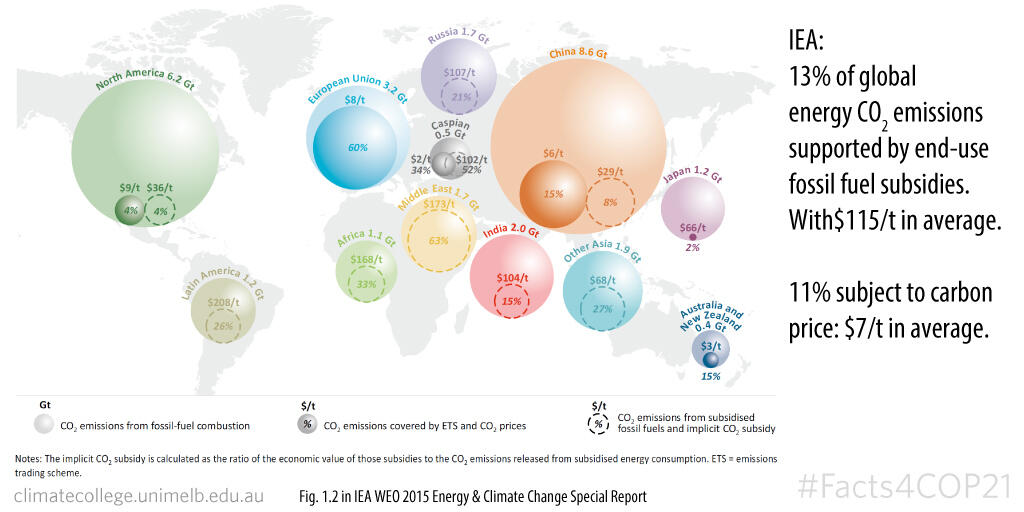Facts4COP21: Carbon price average is $7/t while consumption subsidy average is $115/t

The IEA Special World Energy Outlook Report 2015 on Energy and Climate Change contains a number of interesting points.
On page 24, Figure 1.2 illustrates for selected regions:
- the volume of energy-related CO2 emissions;
- the percentage of energy-related CO2 emissions that are covered by a carbon price;
- and the percentage of energy-related CO2 emissions that are covered by end-use consumption subsidies (any production subsidies would be additional to these).
The picture tells a sober story. Globally, 13% of energy-related CO2 emissions are supported by some end-use fossil fuel subsidy, at an average rate of $115 per tonne. At the same time, only 11% of energy-related CO2 emissions are subject to a carbon price, and that price is, on average just $7 per tonne.
Why would we expect global emissions to follow a downward trajectory when end-use fossil fuel subsidies have a broader coverage than carbon prices and a sixteen-fold higher dollar tag?
Of course, the picture is regionally diverse; end-use subsidies mainly occur in the Middle East and poorer countries.
What can we learn from all this? Firstly, careful gradual policies are needed to get rid of subsidies, keeping in mind the social aspects of energy poverty (for example, in cases where those end-use subsidies can help farmers get their produce to the next town). Secondly, the co-benefits of addressing end-use energy subsidies can be tremendous. If renewably sourced energy can, for example, provide rural electrification (and thus allow our farmer to use an electro-scooter), there can be benefits for governmental budgets, availing more resources for health and education.
Of course, the overall picture is more complex. In practice, many subsidies do not address the needs of the poor. Furthermore, there have been decades of fossil fuel subsidies on the production side as well.
For the climate, as long as on a global scale CO2 emissions receive more subsidies than they face prices, it is no surprise that we have not yet started on the necessary downward trajectory. But there are good opportunities to help get us there.
